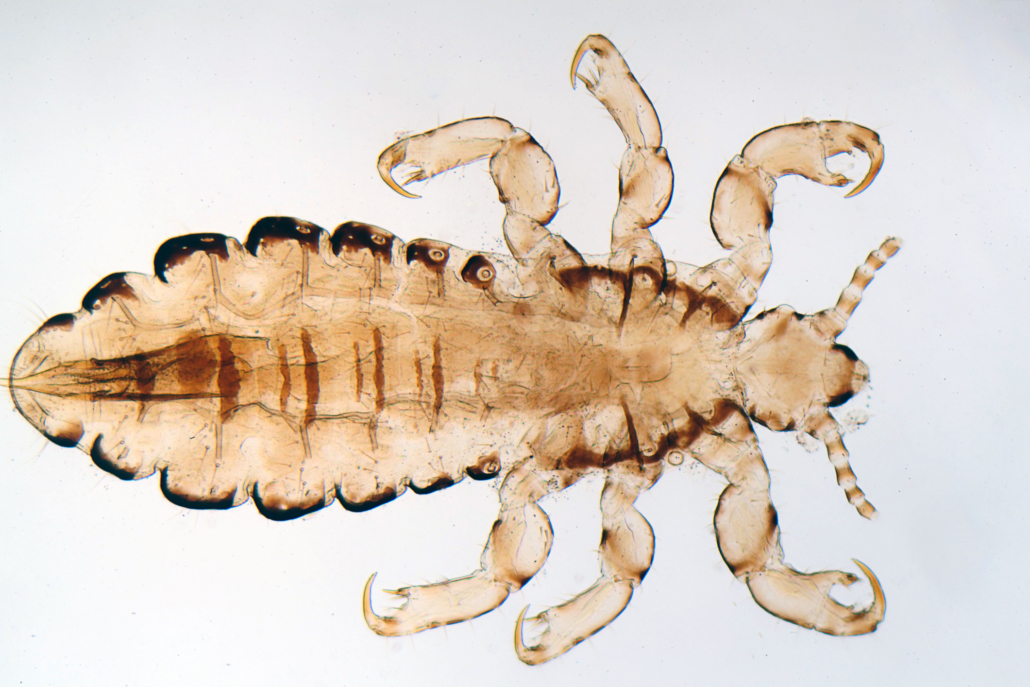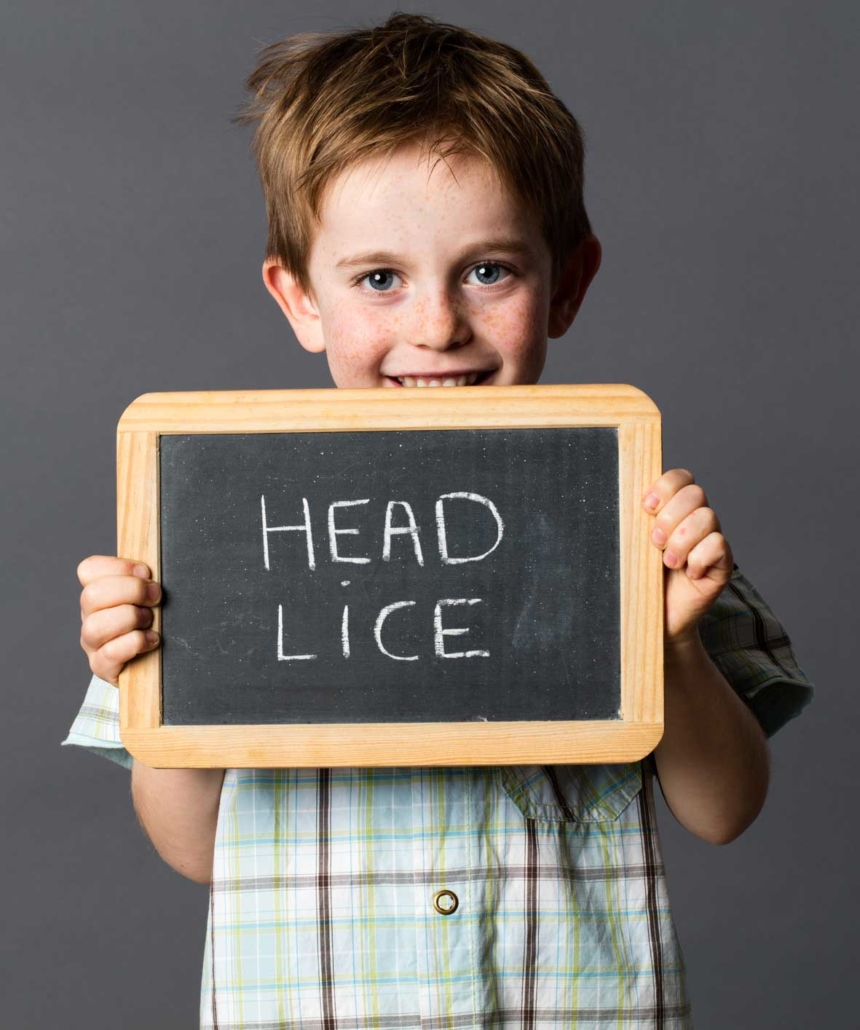WHAT YOU NEED TO KNOW ABOUT HEAD LICE IN THE DALLAS-FORT WORTH AREA
Head lice effects families and individuals of all types and all areas in Dallas-Fort Worth and surrounding communities. The more you know about them, the easier and quicker it is to treat.

QUICK INFO
Adult lice will be the easiest to spot because they are the biggest. But at the size of a sesame seed, they still aren’t that big. Although lice vary in color, if you see a grayish-white or tan bug crawling through the hair, it is probably a louse. If you look closely at an adult louse, you should be able to see human blood inside it.
Look at the hair strands about a quarter inch (~0.5 cm) off the scalp. See if you can find lice eggs (often called nits) attached to individual hairs. Nits are extremely small. They look like tiny specks and will be glued pretty securely to the hair. If you see any, try pulling them off with your fingers. If you can’t easily pull them off, they are probably eggs and not dandruff.
The primary way you can get head lice is when your head comes in direct contact with the head of an infested individual. Head-to-head contact like that doesn’t guarantee that the infestation will spread, but it gives lice the best opportunity to move from the hair of the infested person to your hair.
Head lice don’t jump, swim or fly. Without strands of hair to grab with the claws on their legs, they have trouble getting around at all. However, they can crawl pretty quickly along the hair, so if your hair comes in contact with an infested head, it doesn’t take much for a louse to hitch a ride on a strand of your hair and make its way to your scalp.
Excluding the 8-9 days they spend as eggs, head lice can live for around 40-45 days on your head. As parasites, they feed on human blood several times a day.
If they are removed from their food source – say from getting knocked out of your hair with a brush or your hand – they can survive 24-48 hours. If they don’t find some human hair to crawl back to a new host during that time, they will die.
Yes! Efficacy claims are backed up by clinical data.
Head lice do not survive long if they fall off a person and cannot feed. You don’t need to spend a lot of time or money on housecleaning activities. Follow these steps to help avoid re–infestation by lice that have recently fallen off the hair or crawled onto clothing or furniture.
- Machine wash and dry clothing, bed linens, and other items that the infested person wore or used during the 2 days before treatment using the hot water (130°F) laundry cycle and the high heat drying cycle. Clothing and items that are not washable can be dry–cleaned OR sealed in a plastic bag and stored for 2 weeks.
- Soak combs and brushes in hot water (at least 130°F) for 5–10 minutes.
- Vacuum the floor and furniture, particularly where the infested person sat or lay. However, the risk of getting infested by a louse that has fallen onto a rug or carpet or furniture is very small. Head lice survive less than 1–2 days if they fall off a person and cannot feed; nits cannot hatch and usually die within a week if they are not kept at the same temperature as that found close to the human scalp. Spending much time and money on housecleaning activities is not necessary to avoid re-infestation by lice or nits that may have fallen off the head or crawled onto furniture or clothing.
- Do not use fumigant sprays; they can be toxic if inhaled or absorbed through the skin.
Get more information on our FAQ page or please contact us
LICE FACTS
LICE
Although there are many types of lice, the head louse, or Pediculus humanus capitis, is a parasitic insect that can be found on the head and, more rarely, the eyebrows and eyelashes of people. Head lice (the plural form of louse) feed on human blood several times a day and live close to the scalp to maintain their body temperature.
LIFE CYCLE
Head lice come in three stages: egg, nymph and adult. Eggs are often called lice nits, although many people refer to nits as the empty egg shells left behind by a hatched louse.
LICE HAVE CLAWS
A head louse has six claws that allow it to crawl around from hair strand to hair strand. It can move from one head to another this way, which is why head-to-head contact is the primary way lice are spread between people.
HEAD TO HEAD
A head-lice infestation occurs when a female adult louse makes it onto a new head and lays eggs. When those eggs hatch, the lice will most likely stay on that head throughout the entire lice life cycle. Unless the head is treated and all lice and eggs are eradicated, the lice infestation will continue for as log as lice can live.
FAQs; WHAT YOU NEED TO KNOW ABOUT HEAD LICE
Head lice are tiny insects or parasites that feed on blood from the human scalp. Lice transfer from one head to another by head-to-head contact such as selfies or anytime an infested person comes in direct contact with an infested person's hair. According to the CDC there are 6-12 million cases of head lice in the United states every year. They can’t survive more than 48 hours off the head, but during that time they are capable of infesting someone else’s head. Read more here.
Nits, aka lice eggs, are quite small (0.8mm by 0.3mm) and uniform in shape. They vary in color after hatching, but are generally whitish and oval-shaped. Female lice lay their nits on the hair shaft close to the scalp where the temperature is perfect for keeping them warm until they hatch into baby lice (nymphs). The nits are protected from falling off the hair shaft by the louse”glue” that the female louse attaches them with. They can’t be removed easily by brushing, shampooing or shaking them off like dandruff.
Anyone. A person’s degree of cleanliness or personal hygiene has little or nothing to do with getting head lice. Lice are parasites and the head is the host - they feed on human scalps no matter how clean or dirty the hair is. If one person in your household has head lice, everyone who lives in your home or has prolonged exposure within the home — such as babysitters or overnight guests — should be screened and possibly treated by a professional. If school-age or preschool children are affected, notify their school or day care center.
Head lice can be spread when there is direct head-to-head contact with an infested individual. Because head lice often move rapidly through groups who have close contact, such as schoolchildren, sports teams, families and other extracurricular activities, prompt treatment with a professional service is important to minimize spread. Much less frequently, lice may also be transmitted by items such as brushes, pillows, etc.
Head lice are most commonly found on the scalp, behind the ears and near the neckline at the base of the head.
You may also experience the following symptoms:
- Tickling sensation from lice movement in your hair
- Red bumps on your scalp, neck and behind the ears
- Lack of sleep or irritability
- An allergic reaction to the bites causes itching.
A 2016 study found that resistant lice have spread to all states in the US. Super lice are a strain of these parasites that are now resistant to conventional OTC treatments.
Super lice evolved because of repeated exposure to the chemicals in the most popular OTC products over nearly 50 years! Repeated exposure builds resistance, not only to that particular treatment but to virtually all similar products. Lice Clinics DFW cold air technology and process kills 100% of lice, including “Super Lice” every time.
Some people try to kill head lice with heat using an extra-hot hair dryer or flattening iron. Putting kerosene on the hair is also sometimes used as a way to kill lice. These techniques can lead to severe burns. Do not use them!
The adult louse is no bigger than a sesame seed and is grayish-white or tan. Nymphs are smaller. Lice eggs (often called nits) look like tiny tan, or brown dots before they hatch. After hatching, the remaining shell may look white or clear.
Eggs are laid by adult female lice and are attached to the hair shaft with a glue-like substance (the female louse can lay from 5-8 eggs everyday for 30 days until the female dies) and usually take about 8 to 9 days to hatch into nymphs (immature lice).
- Avoid head to head contact during play, sleepovers, or other activities at home, school, sports, dance, theatre and elsewhere.
- Make an appointment with a professional lice service to screen your entire family
- Do not share combs, brushes or towels used by an infested person.
- Wash and dry clothing, bed linens, and other items that an infested person used or wore during the previous 2 days using a high heat drying cycle.

